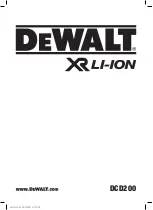
cooling by the fan can be restricted because of tight enclosures.
Clearance of 1” is necessary both at the air intake and exhaust.
PLUMBING
A number of valves and connectors have been supplied with unit. With
the PVC and plastic fittings and valves, add Teflon tape to the threads
and HAND tighten. (DON’T OVERTIGHTEN)
1.
Three ball valves are supplied. Add Teflon tape and thread a ball
valve into the drain port of each tank. A ¼” NPT x ½” hose
connector is to be added to the outlet of each ball valve.
2.
Tank 1 has input and output for a pump filter system.
3.
Connect the water sources to the rinse inlet of tank 2 and 3.
A needle valve is supplied to regulate the water flow into the tank.
An internal solenoid starts or stops the flow in conjunction with
the timer. Connect your water supply to the ¼” compression input
of the needle valve.
4.
Add ¼” NPT x ½” hose connector to the rinse outlet port of
tank 2 and 3 and connect a hose to drain. When operating, turn
timer 2 or3 ON and water comes in tank and cascades out to
drain.
5.
Tanks 2 and 3 have high level sensors. If the water level becomes
too high in tank because of a blockage in the drain line, the sensor
will shut off this solenoid preventing any water overflow of tank.
Before starting, add water manually to tanks 2 and 3 so that the
ultrasonics do not run on an empty tank.
Pump Filter System
The cleaning tank 1 is equipped with electrical and plumbing outlets to
hook up the pump filter system. When the pump filter system is turned
ON the solution in tank 1 will recycle independent of timer. The
standpipe in the tank is the discharge to the pump. The tank level will
have to be higher than the standpipe or the standpipe can be removed
and the discharge will be at the bottom of the tank.
Initial Start Up Of Pump Filter
4





















